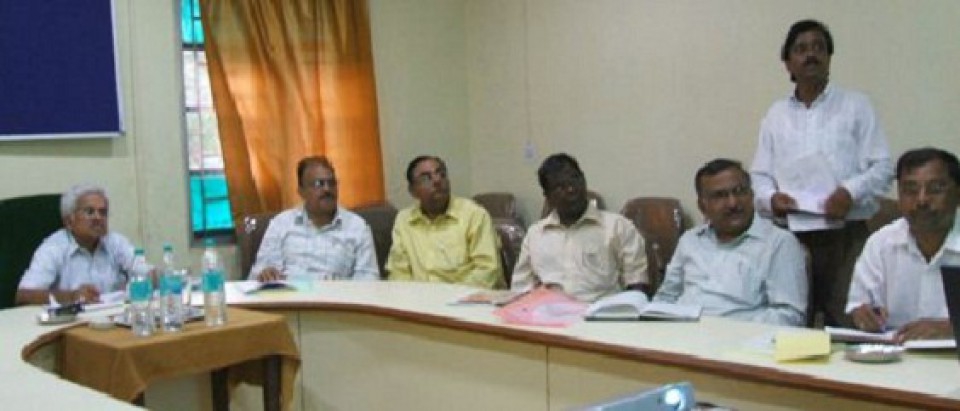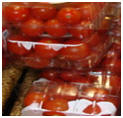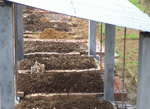 |
|
 |
Vocational Trainings
Training in bakery, fruit & vegetables, preservatives & dairy products Read More…
|
 |
Technological Options
Food projects in area of fruit & vegetables, cereal, oil seeds, spices etc. Read More…
|
 |
Career Options in Food Sector
For admissions & Job seekers & employers in food industry in India & Abroad Read More…
|
 |
New Concepts
New Technologies, products & establishment of colleges of food systems. Read More…
|
 |
Fresh Food Management
Fresh food for retail & exports & their quality management Read More…
|
 |
Arranging Government Grants
Assistance for establishing food industry, infrastructure, development & modernization. Read More…
|
 |
Products Available With Us
Organic Agricultural Inputs, Organic Foods, Food Safety Read More…
|
 |
Services Which We Can Provide
Global Linkages, Technological Sourcing, Consultancy Services, Arrange Grants From Government Read More…
|
Organic Products: Organic refers to agricultural production systems used to produce food and fiber. All kinds of agricultural products are produced organically, including produce, grains, and processed food products. Organic farming management relies on developing biological diversity in the field to disrupt habitat for pest organisms, and the purposeful maintenance and replenishment of soil fertility. Organic farmers are not allowed to use synthetic pesticides or fertilizers. Some of the essential characteristics of organic systems include: design and implementation of an “organic system plan” that describes the practices used in producing crops and livestock products; a detailed recordkeeping system that tracks all products from the field to point of sale; and maintenance of buffer zones to prevent inadvertent contamination from adjacent conventional fields.
Letter Codes for the information below for display on the package of organic food indicate position on package and are defined as follows:
PDP: Principal Display Panel
IP: Information Panel
IS: Ingredients Statement
OP: Any Other Panel
The information for display on the package of organic food
| If you want to claim: | “100 percent Organic” (or similar statement) |
| Your product: | Must contain 100 percent organically produced ingredients, not counting added water and salt. |
| Your label MUST: | Show an ingredient statement when the product consists of more than one ingredient.Show below the name and address of the handler (bottler, distributor, importer, manufacturer, packer, processor, etc.) of the finished product, the statement:”Certified organic by ____” or similar phrase, followed by the name of the Certifying Agent. Certifying Agent seals may not be used to satisfy this requirement. (IP) |
| Your label MAY show: | The term “100 percent organic” to modify the product name. (PDP/IP/OP) The term, “organic” to identify the organic ingredients1. Water and salt included as ingredients must not be identified as organic. (IS)The USDA organic seal and/or certifying agent seal(s). (PDP/OP)The certifying agent business/Internet address or telephone number. (IP) |
| Your label MUST NOT show: | Not applicable |
| If you want to claim: | “Organic” (or similar statement) |
| Your product: | Must contain at least 95% organic ingredients, not counting added water and salt.Must not contain added sulfites.May contain up to 5% of:
|
| Your label MUST: | Show an ingredient statement.List the organic ingredients as “organic” when other organic labeling is shown.1 Water and salt included as ingredients must not be identified as organic. (IS)Show below the name and address of the handler (bottler, distributor, importer, manufacturer, packer, processor, etc.) of the finished product, the statement:”Certified organic by ___” or similar phrase, followed by the name of the Certifying Agent. Certifying Agent seals may not be used to satisfy this requirement. (IP) |
| Your label MAY show: | The term “Organic” to modify the product name. (PDP/IP/OP)”X% organic” or “X% organic ingredients.” (PDP/IP/OP)The USDA Organic seal and/or certifying agent seal(s). (PDP/OP)The certifying agent business/Internet address or telephone number. (IP) |
| Your label MUST NOT show: | Not applicable |
| If you want to claim: | “Made with Organic Ingredients” (or similar statement) |
| Your product: | Must contain at least 70% organic ingredients, not counting added water and salt.Must not contain added sulfites; except that, wine may contain added sulfur dioxide in accordance with 7 CFR 205.605.May contain up to 30% of:
|
| Your label MUST: | Show an ingredient statement.List the organic ingredients as “organic” when other organic labeling is shown.1 Water and salt included as ingredients must not be identified as organic. (IS)Show below the name and address of the handler (bottler, distributor, importer, manufacturer, packer, processor, etc.) of the finished product, the statement:”Certified organic by ___” or similar phrase, followed by the name of the Certifying Agent. Certifying Agent seals may not be used to satisfy this requirement. (IP) |
| Your label MAY show: | The term “Made with organic ___ (specified ingredients or food groups).” (PDP/IP/OP)”X% organic” or “X% organic ingredients.” (PDP/IP/OP)The certifying agent seal(s). (PDP/OP)The certifying agent business/Internet address or telephone number. (IP) |
| Your label MUST NOT show: | The USDA Organic seal |
| If you want to claim: | That your product has some organic ingredients |
| Your product: | May contain less than 70% organic ingredients, not counting added water and salt.May contain over 30% of:a. nonorganically produced agricultural ingredients; and/or
b. other substances, without being limited to those in 7 CFR 205.605 |
| Your label MUST: | Show an ingredient statement when the word organic is used.Identify organic ingredients as “organic” in the ingredients statement1 when % organic is displayed. Water and salt included as ingredients must not be identified as organic. (IS) |
| Your label MAY show: | The organic status of ingredients in the ingredients statement.1 Water and salt included as ingredients must not be identified as organic. (IS)”X% organic ingredients” when organically produced ingredients are identified in the ingredient statement. (IP) |
| Your label MUST NOT show: | Any other reference to organic contents.The USDA Organic seal.The certifying agent seal. |
1 To identify an ingredient as organically produced, in the ingredients statement, use the word, “organic” in conjunction with the name of the ingredient, or an asterisk or other reference mark which is defined below the ingredient statement.
Organically Produced Food Products
All the vegetables shown in the handout can be grown through contracts with farmers at reasonable prices and exported by creating export channels as desired by importers.
Specification
| · pH | 6.5-7.5 |
| · Organic Carbon | 17.50 – 30.31 % |
| · Nitrogen | 0.80 – 2.05 % |
| · Phosphorus | 0.70 – 1.93 % |
| · Potassium | 0.30 – 1.50 % |
| · Carbon : Nitrogen | 14-15 : 1 % |
| · Calcium | 1.50 – 4.5 % |
| · Magnesium | 0.2 – 0.7 % |
| · Sodium | 0.02 – 0.30 % |
| · Sulphur | Traces to 0.40 % |
| · Iron | 0.08 – 0.7 % |
| · Zinc | 0.028 – 0.036 % |
| · Manganese | Traces to 0.40 % |
| · Copper | 0.0027 – 0.0123 % |
| · Boron | 0.0034 – 0.0075 % |
| · Aluminum | Traces to 0.071 % |
| · Cobalt, Molybdenum | Present in available form |
| · Biological | Total bacterial count of 2.5 ´ 106 comprising of Azotobacter, PGPR, PSB, Actinomycetes. Also contains Gibberalline, Auxins & Cytokinine in sufficient quantities. Contains sufficient moisture (25-35%) at the time of packing. |
SCEINTIFIC VERMICULTURE
| Type of Culture | Rate (Per Kg) | Genetic Purity | No. of Worms | Eggs Percentage |
| Foundation Vermiculture F1 | 650/Kg | 98% | 1000/Kg | 50% |
| Foundation Vermiculture F2 | 500/Kg | 94% | 1000/Kg | 40% |
| Foundation Vermiculture Pedigee | 350/Kg | 85% | Unpredictable | 25% |
| General Vermiculture | 150/Kg | 60% | Unpredictable | 12% |
Discount on larger quantities may be considered accordingly.
| Advantages of Vermicompost. Minimizes need for chemical fertilizers, makes thesoil healthy with high NPK content and yields cropsof better quality. . Agricultural and kitchen wastes are put to gooduse. · Can be done at a smaller scale and at a faster ratethan other methods of composting. · Can be done for commercial purposes as well as for use on one’s own farm. · Surplus earthworms can be converted into good livestock feed. The Diverse Uses of Worms Worms that live in soil are not just useful for making humus, or as fishing bait, which is another common use. Other uses include:
Production It can be produced in bins, pits or troughs either below or above the soil surface, using bricks or stone slabs or even plastics. If the pits are over it as moisture in the thatched roof should be built over it as moisture in the 40-50% range and temperature in the 20-30° C range need to be maintained. Any organic waste or agricultural residue can be used as feed mixture, etc. farmyard wastes, green wastes, sugarcane theash, kitchen wastes etc. They should be mixed with cow dung in the ratio of 8:1. Once the feed mixture is seen to largely contain casts, then it is dumped in conical heap for few hours. The worms collect at base and can be easily retrieved for reuse. The rest of the dried material is passed through a 3 mm sieve to collect the casts as vermicompost.
|
|||||||||||||||||||||||||||||||||
Vermicast vs. Chemical Fertilizers in Soil
|
|||||||||||||||||||||||||||||||||
| Economic Evaluation: Vermicast vs. Chemical Fertilizers Generally cost comparisons for different fertility inputs are carried out on per unit of cultivated area basis. However, the correct methods for comparison should be either the cost per unit of output or the cost per unit of fertility inputs. Here a comparison has been made on the basis of cost per unit of fertility inputs provided through chemical fertilizers Vs. vermicast.Cost of Chemical Fertilizer Use Presently chemical fertilizers are used for providing nutrients such as nitrogen, phosphorous and potash. The cost of these chemical fertilizers in the context of their plant uptake i.e. fertilizers use efficiency are estimated as follows. Urea
DAP
SSP
CAN
Cost of Vermicast Use In case of vermicast, over 70 percent is consumed by the farmers through their in-house production. For remaining, the farmers are buying vermicast from commercial production units at an average price of Rs.2000/- per metric tone. 1. The average nutrients contents reported for vermicast are nitrogen-1.5 to 2.5 percent (average 2%), phosphorus-1.25 percent (average 1.75%), potash-1.00 to 2.00 percent (average 1.5%). 2. In addition vermicast contains all micronutrients and trace elements, that would also add up to atleast one percent equivalent of nutrients. 3. The vermicast has active biological life containing Azatobactor, PSB, PGPR, etc. During 90-100 days of crop duration they also add up to 1.5 to 2.5 percent nutrients (average 2%). 4. Say 1000 kg of vermicast is used per hectare. 5. The total nutrients provided by 1000 kg of vermicast will add up to 82.50 per kg (8.25%) and at an average plant uptake i.e. use efficiency of 65 percent will provide 53.60 kgs of nutrients. 6. At an average cost of vermicast at Rs.2000/- per MT per hectare, the cost of nutrients is Rs.37.00/- per kg. In addition to nutrients, vermicast will also provide better aeration, water retention capacity and many other benefits. Some of the major advantages of vermicast use are also the lower cost of labour (saving due to lesser weeds in the field) and saving from the cost of treatment for termites. Vermicast on subsequent use has been found to provide at least 20-30 percent more nutrients. This ability can continuously reduce the quantities of vermicast used in the field over long durations. From the above the actual nutrient used and the cost incurred for various chemical fertilizers, it clearly indicates that the chemical fertilizers are more expensive than vermicast. The use of chemicals has also been promoted by large amounts of subsidies that enabled them to be used as nutrients for crops. Economics (One Bed) A. Capital Cost of 100 beds Item Cost (Rs.) Vermiculture cost@ Rs 600/kg for 100 beds 1500000 1 Construction of a temporary shed for setting up 400 tpa vermi-compost unit 120,000. 2 Implement and Machinery for a 400 tpa unit 80,000 3 Office cum store 120000 4 Water source 40000 Total 1860,000 B. Recurring Cost Item Cost (Rs.) 1 Feed stock & handling cost @ Rs. 30,000 per cycle for 6 cycle in a year 1,80,000 2 Rent on lease @ Rs. 8,000 per year 8,000 Total 188000 (Operational cost of two cycles is capatalised) Total Project Cost : Capital cost – Rs. 1860,000 Recurring cost – Rs. 188000 capitalized Total Rs 2048000 5. Margin 20% 6. Bank loan :80% 7. Rate of interest : 12% pa 8. Repayment period : 8 years including grace period of one year 9. Income Item Cost (Rs.) (I year) 1 Sale of vermi-compost 400 tons @ Rs. 2000 per ton 800000 Total 8,00,000 Net Benefit 8,00,000-2048000= -1248000 (II year) C. Recurring Cost Item Cost (Rs.) 1 Feed stock & handling cost @ Rs60,000 per cycle for 6 cycle in a year 36,0000 2 Rent on lease @ Rs. 8,000 per year 8,000 Total 3,68,000 Additional Construction of a temporary shed for setting up 400tpa vermi-compost unit 1,20,000 Total input 4,88,000 Sale of vermi-compost 800 tons @ Rs. 2000 per ton 16,000,00 Less Total recurring cost 4,48,000 Net Benefit 11,52,000 OVERALL PROFIT AFTER 2 YEARS Net benefit of 2nd years- recovery for the 1st year 11,52,000 – 1248000 =-96000 D. Recurring Cost Item Cost (Rs.) 1 Feed stock & handling cost @ Rs. 1,20,000 per cycle for 6 cycle in a year 7,20,000 2 Rent on lease @ Rs. 8,000 per year 16,000 Total 7,36,000 Additional Construction of a temporary shed for setting up 800tpa vermi-compost unit 2,40,000 Total input 9,76,000 Sale of vermi-compost1600 tons @ Rs. 2000 per ton 32,00,000 Less Total recurring cost 9,76,000 Net Benefit 22,24,000 Overall profit after deducting recovery= 22,24,000 –96,000 = 21,28,000 note : • Margin of 20% is assumed, but the actual margin will be as per the discretion of the banks. |

















